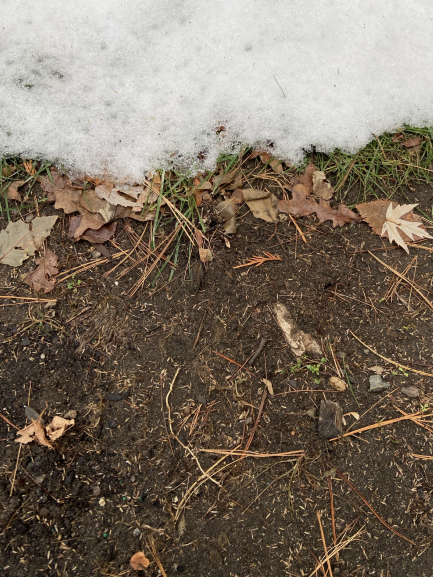By Maggie Reiter, Extension Educator
Seeding is a simple and affordable approach to repair bare areas of a lawn. Even mature lawns can benefit from overseeding to integrate newer grass varieties that use less water and mowing. We generally consider applying grass seed to our lawns in the early fall or springtime. Dormant seeding is another seeding opportunity that is easy and often underutilized.
Dormant seeding can take place 1) after soil temperatures have dropped below 45 degrees Fahrenheit for several days and 2) before there is consistent snow covering the target lawn areas. This window of opportunity usually happens by early to mid-November in the Twin Cities region. The timing is important because we want temperatures to be too cold so seed does not germinate this year, but we want to apply seed before snow cover blocks the target lawn areas. To seed, all one needs to do is sprinkle seed at the recommended rate where it is needed and ensure good seed-to-soil contact with a light raking in. Beyond that, no irrigation or fertilizer is necessary.
The seed will remain dormant (no growth) all winter. Nothing will happen this year. In the springtime, as soil temperatures warm and snow melts, the seed will start to germinate. Dormant seeding helps a lawn get off to a strong start in spring, where the seed applied last November starts growing ahead of spring weeds and uses the moisture provided by snow melt.
Also note, dormant seeding is often recommended for establishment of flowering bee lawns, where native broadleaf forbs are seeded into a lawn to provide pollinator resources.
